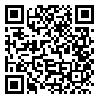BibTeX | RIS | EndNote | Medlars | ProCite | Reference Manager | RefWorks
Send citation to:
URL: http://ijdld.tums.ac.ir/article-1-295-en.html

 , Vahideh Montazeri
, Vahideh Montazeri 
 , Seyed Mohammad Akrami *
, Seyed Mohammad Akrami * 
 1, Ramin Heshmat
1, Ramin Heshmat 
 , Bagher Larijani
, Bagher Larijani 

Background: High prevalence of consanguineous marriages has been reported in Iran. Since this pattern of marriage may increase the prevalence of diseases with autosomal recessive pattern of expression, the study was assigned to determine this among patients referred to diabetes and osteoporosis clinics of Dr Shariati hospital, Tehran, Iran.
Methods: The consanguineous marriage was studied among 1789 couples of three successive generations via Questionnaire.
Results: The prevalence of consanguineous marriages in three successive generations was 9%, 17% and 19%, respectively with an increasing pattern of prevalence. Overall the prevalence of first cousins marriage was 10% with 69% among consanguineous marriage group. The higher the level of education, the lower the prevalence of consanguineous marriage.
Conclusion: In view of the increasing prevalence of consanguineous marriage that may be followed by some trouble consequences about disease expression, it seems necessary to provide facilities for genetic counseling before marriage for youth.
Received: 2007/05/9 | Accepted: 2007/10/8 | Published: 2013/10/15
| Rights and permissions | |
 |
This work is licensed under a Creative Commons Attribution-NonCommercial 4.0 International License. |



